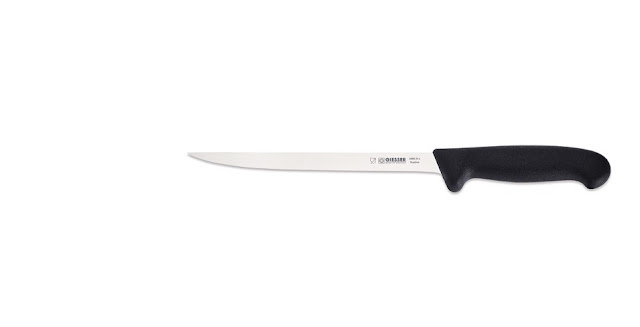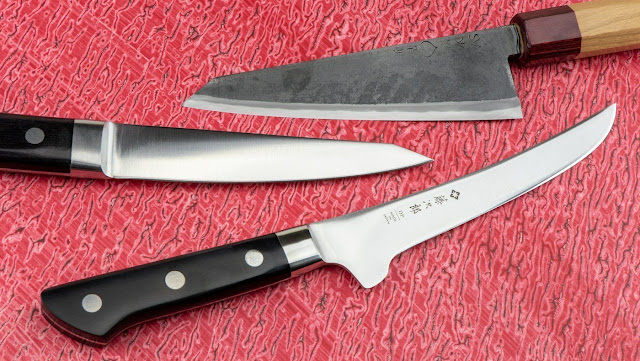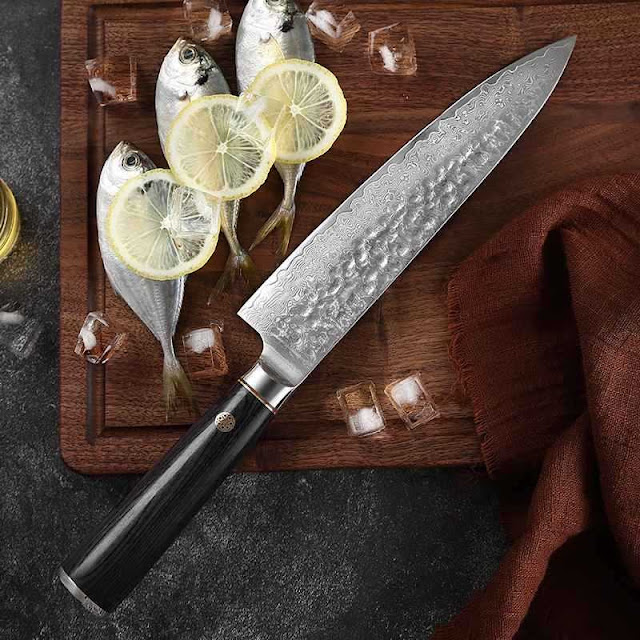Slice and Dice Like a Pro: The Art of Filleting Knife Mastery
In the world of culinary precision, few tools are as essential as the filleting knife. Whether you're a professional chef or an avid home cook, having the right filleting knife in your kitchen arsenal can make all the difference when it comes to preparing delicate cuts of fish or meat. In this blog post, we'll dive deep into the world of filleting knives, exploring their unique characteristics, the art of filleting, and why owning one is a game-changer for your kitchen.
The Anatomy of a Filleting Knife:
Before we embark on our journey into filleting knife mastery, let's familiarize ourselves with the key features of this specialized tool:
Blade: Filleting knives have long, thin blades that are incredibly sharp. They are designed to make precise cuts, especially when working with delicate fillets of fish or meat. The blade's flexibility is crucial for navigating around bones and achieving clean cuts.
Blade Length: Typically, filleting knives have blades ranging from 6 to 9 inches in length. The choice of blade length depends on personal preference and the size of the fish or meat you'll be filleting.
Handle: The handle of a filleting knife should provide a comfortable and secure grip. Many handles are designed to be non-slip, ensuring safety during use.
Flexibility: The blade's flexibility is a key factor in a filleting knife's effectiveness. A flexible blade can effortlessly follow the contours of the fish or meat, minimizing waste and producing clean fillets.
The Art of Filleting:
Filleting is a technique that requires skill and practice, but with the right filleting knife, you're well on your way to becoming a master. Here are some key steps in the art of filleting:
Select the Right Knife: Choose a filleting knife that suits the task at hand. For fish, opt for a thin, flexible blade, while a slightly stiffer blade is better for meat.
Prepare the Fish or Meat: Ensure your fish or meat is properly cleaned and scaled (if necessary) before starting the filleting process.
Make an Incision: Begin by making an incision along the dorsal (top) side of the fish or along the grain of the meat. Use gentle, even pressure to avoid tearing the flesh.
Follow the Contours: With the blade's flexibility, follow the contours of the bones, guiding the knife along the spine or bone structure.
Trim and Skin: Carefully trim away any excess bones and skin, leaving behind a clean fillet.
Practice Makes Perfect: Filleting is an art that improves with practice. Don't be discouraged by initial mistakes; over time, your filleting skills will sharpen.
Why a Filleting Knife Is a Kitchen Game-Changer:
Precision: Filleting knives are specifically designed for precision cuts, ensuring minimal waste and beautifully prepared fillets.
Versatility: While primarily used for fish, filleting knives can also be employed for deboning poultry and trimming meats.
Chef-Level Skills: Owning a filleting knife allows you to perform tasks previously reserved for professional chefs, impressing your guests with restaurant-quality dishes.
Conclusion:
A filleting knife is more than just a kitchen tool; it's a gateway to culinary mastery. Whether you're a seafood aficionado or a meat enthusiast, the precision and versatility of a filleting knife can elevate your cooking to a whole new level. So, equip yourself with this indispensable kitchen companion, hone your filleting skills, and unlock the potential to create culinary masterpieces that rival those of professional chefs. Happy filleting!




Comments
Post a Comment